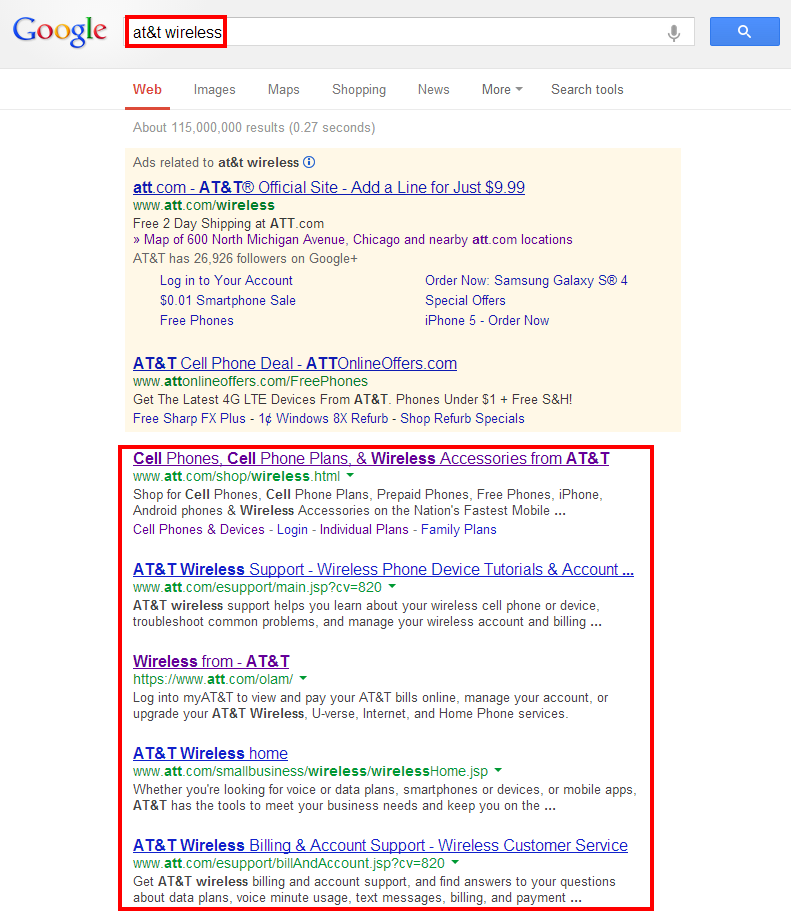I don’t know about you, but the first thing I look at in the morning is my smartphone, and it’s the last thing I look at before I go to bed. According to comScore, there are more than 133 million registered smartphones in the United States. Regardless of the device you use to search for information, it’s evident that the world is shifting toward mobile, and as a business, you must make sure your content remains in view.
Here at Brafton, we continuously create and evolve complex SEO strategies for our clients, but they’re almost always designed for standard desktop search. In a world where smartphones are starting to dominate the search landscape, there must be a shift toward SEO strategies with a mobile-first focus. When creating a mobile-friendly SEO strategy, there are three key components to consider: Google’s mobile algorithm, keyword and mobile search behavior and responsive web design.
Mobile search technology alters results
Google is king. The brilliant minds at Google continuously update their robust algorithms that decide what shows up on page one in a given search, and the same can be said about a search query done on a mobile device. In early 2012, Google released “Googlebot-Mobile,” an algorithm designed to provide smartphone users with a higher-quality search experience. A key element of the algorithm is the fact that it interfaces with your device’s GPS functionality and tailors your search results based on geographical location.
Take for instance a search query of “AT&T Wireless.” When I perform that search on Google using my laptop, I am given the following organic search results:

As we can see, the first five organic search results are all directing me to the AT&T primary domain where I can learn about devices and accessories, or pay my bill online. When we perform the same search on a smartphone, these are the results we get:
 In this example, we see that the same search query yields very different and localized results. The first result shows me an AT&T store in Highland Park, Illinois (which is where I live), followed by the primary AT&T domain and then a Yelp review of the AT&T location in Highland Park.
In this example, we see that the same search query yields very different and localized results. The first result shows me an AT&T store in Highland Park, Illinois (which is where I live), followed by the primary AT&T domain and then a Yelp review of the AT&T location in Highland Park.
This is happening because Google’s mobile algorithm is not only taking my search query into account when providing my results, but also my specific geographical location. In the world of mobile search, Google will highlight local results first and foremost, and any strong mobile SEO strategy needs to keep this in mind.
Google’s mobile search features change how you search
Along this path, the search behavior of a smartphone user contrasts the search behavior of a desktop or laptop user in a variety of ways. Take for instance a situation that happens to me quite often: I need to find information while driving. Instead of dangerously opening my browser and typing in keywords, I can activate Google Voice Search and simply ask “Where is the closest post office?” Not only will it find the closest location, but it will then automatically activate “Google Now,” give me an ETA to my destination and provide me with turn-by-turn directions.
Google understands that a mobile user is more likely to be immediately engaged with search results than a desktop user, and serves results that are tailored toward that notion.
This is the whole idea behind mobile search: Google understands that a mobile user is more likely to be immediately engaged with search results than a desktop user, and serves results that are tailored toward that notion.
The days of going to the mobile Google homepage and typing in a search query are gone; with new technologies such as Google “Now,” Google Voice Search and the arrival of Google Glass, the search landscape will never be the same. Given this emerging paradigm of mobile search and the new technology associated with it, keyword research becomes much more intricate.
In order to find the keywords driving traffic to your website from mobile search, use Google Analytics. While in the analytics profile page, go to “audience,” then “mobile,” then “overview.” Once there, create a secondary dimension for keywords under “traffic sources,” then “keywords.” Also include an advanced segment and exclude keywords containing “not set” and “not provided” to eliminate keywords that are not shown through Google search privacy protection.
What you are left with is a group of keywords that users searched on mobile devices, along with important data, including average visit duration and bounce rate. The whole idea here is that the keywords people are using to find your site on mobile can greatly differ from those used in standard desktop searches, and being able to discern those keywords is vital to strong mobile SEO strategies.
RWD improves UX on all devices
A responsive web design (RWD) helps strengthen your mobile content marketing strategy. RWD is the approach of creating a website that can adjust its viewing environment across devices, from large desktop displays to smartphone screens. No longer do you need a separate site optimized for mobile – you can simply use RWD to ensure your website is accessible and aesthetically pleasing no matter the device.
There are several reasons why RWD is vital to a healthy mobile SEO and content marketing strategy. First off, you only have to manage your content for one website. No longer do you have to manage a mobile-friendly version of your domain. As long as your content is unique, optimized and relevant, the site will be viewed (in the eyes of Google) the same way on a mobile device or a laptop. Secondly, one of the best qualities of RWD is that the SEO credibility and trust you develop through link building transfers from your desktop user experience to your mobile site. It is the exact same website, just viewed differently depending on which device your audiences are using.
Mobile search may be the way of the future, but you don’t have to change your content marketing or SEO strategies completely to take advantage of this new trend. A slight adjustment to your web design and how you evaluate your content analytics can fuel your site’s success on desktops and smartphones alike.



